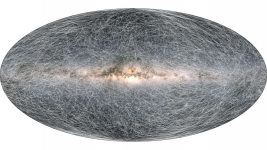Oh, I see. Looks like they've corrected it.
On the Google website listing for the website I got it from after Googling "40,000 stars located within 326 light-years of our milky way" it says:
The Milky Way and beyond: Scientists publish new data ...
1 day ago — This image shows the paths of 40,000 stars located within 326 light-years of our Milky Way ...
but then on the website itself, it NOW says:
This image shows the paths of 40,000 stars located within 326 light-years of our solar system over the next 400,000 years based on measurements and projections from the European Space Agency's Gaia spacecraft. (Image credit: ESA/Gaia/DPAC; CC BY-SA 3.0 IGO. Acknowledgement: A. Brown, S. Jordan, T. Roegiers, X. Luri, E. Masana, T. Prusti and A. Moitinho.)
So it looks like they've corrected it, the ponces.
